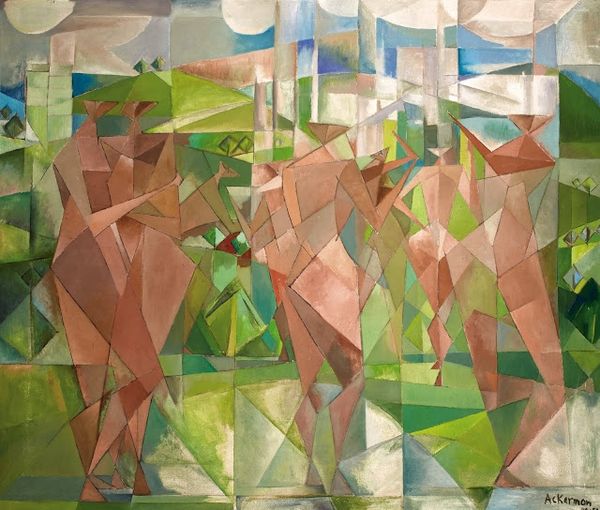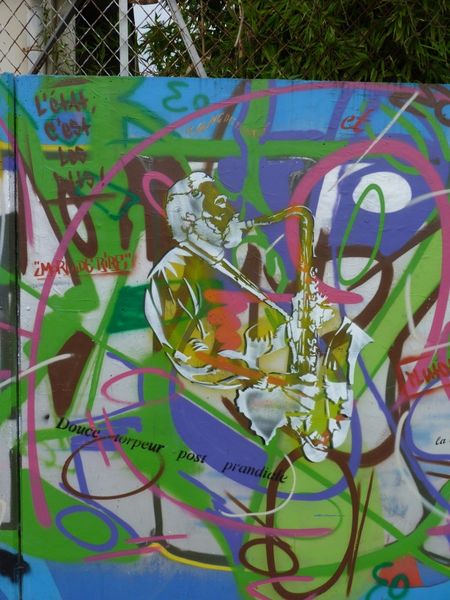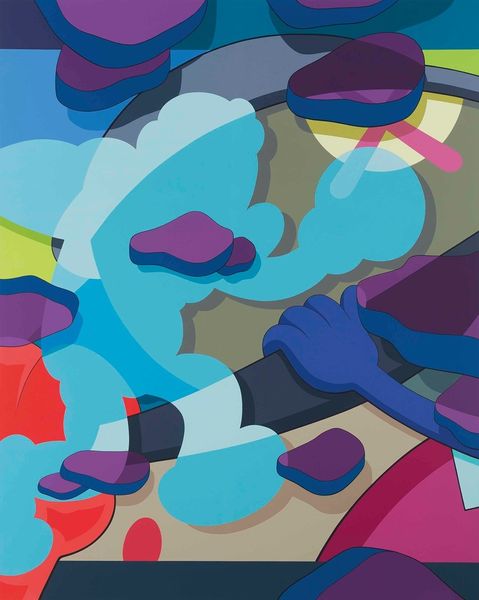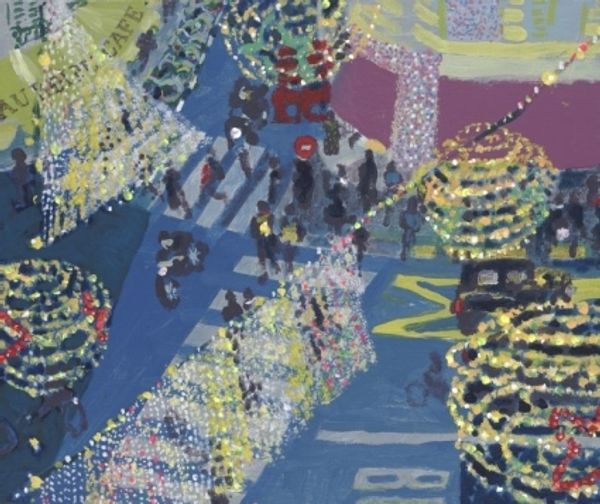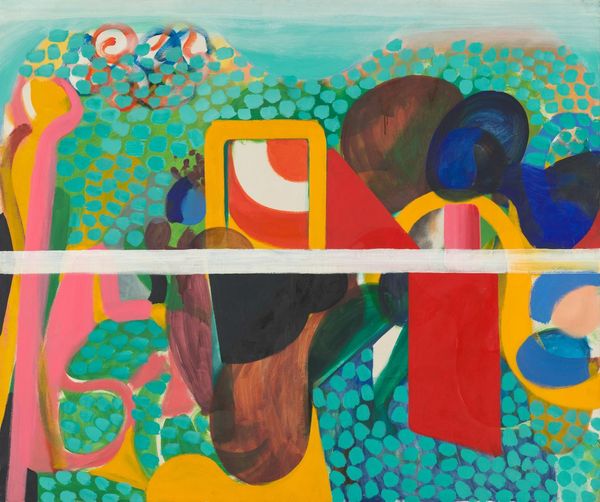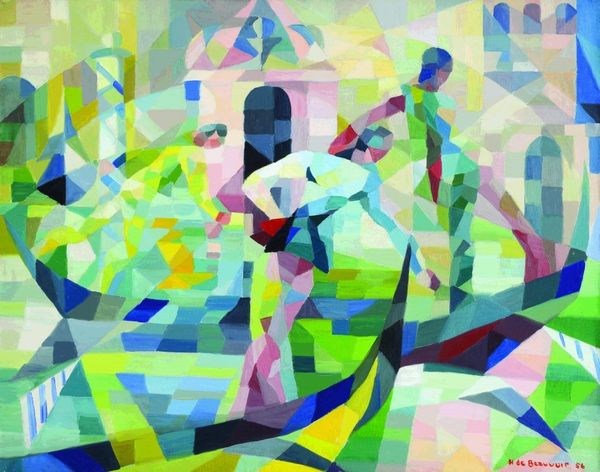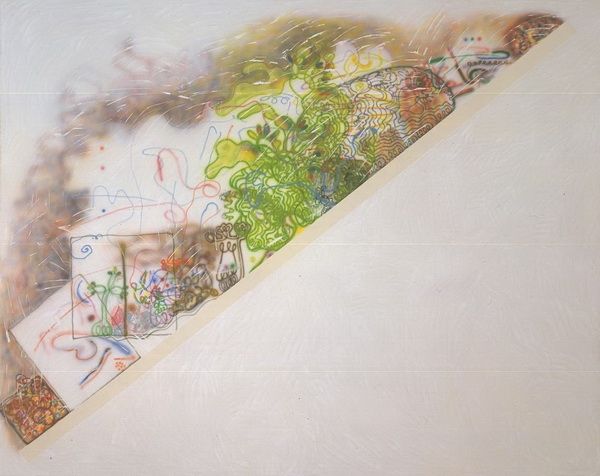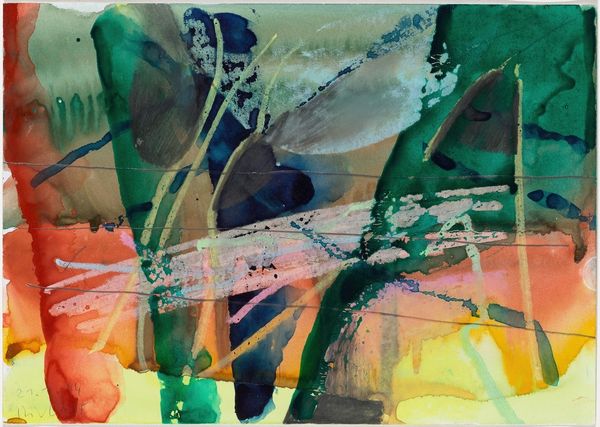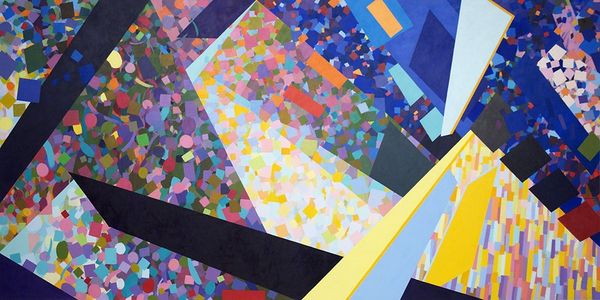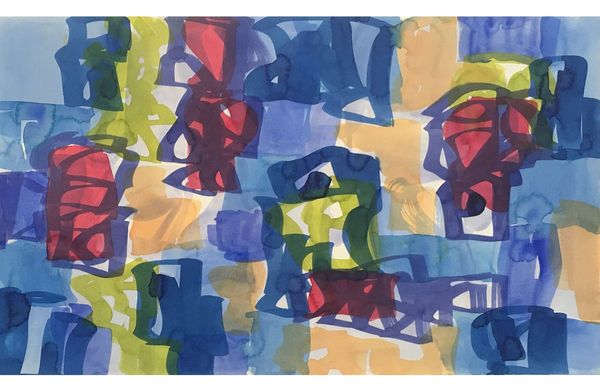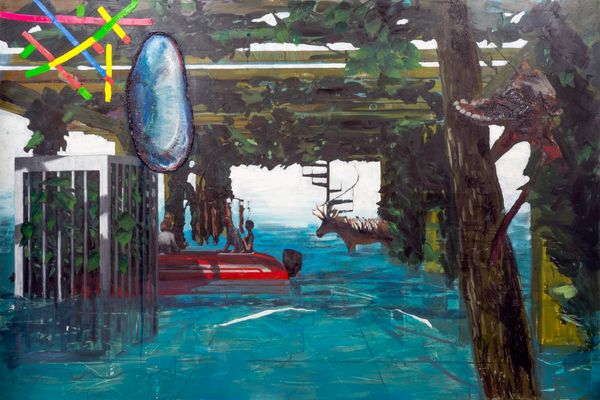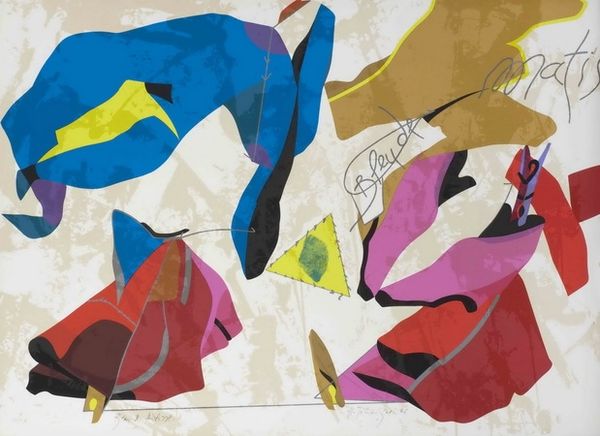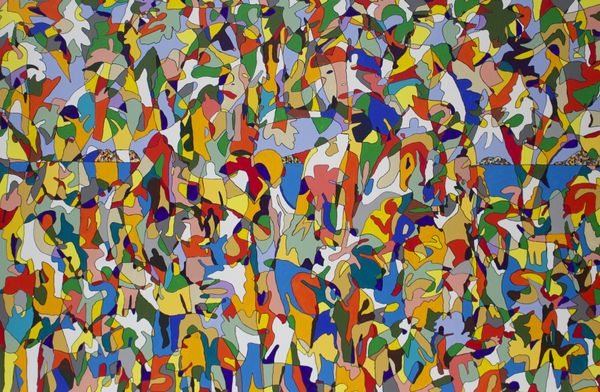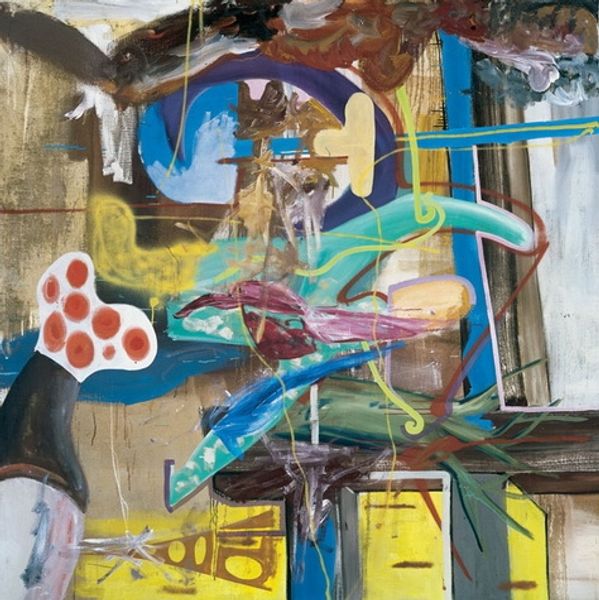
painting, acrylic-paint
#
fauvism
#
fauvism
#
painting
#
landscape
#
acrylic-paint
#
figuration
#
neo expressionist
#
acrylic on canvas
#
painting art
#
modernism
Copyright: Hélène de Beauvoir,Fair Use
Curator: Here we have "Mondines," a vibrant painting rendered in acrylic on canvas by Hélène de Beauvoir. Editor: The color just explodes off the canvas! I see what looks like agricultural laborers, almost stylized, wading in what could be rice paddies. It has a very energetic, almost joyous quality to it. Curator: It does. This work seems rooted in figuration, capturing, as you point out, women working in the fields. De Beauvoir, though working well into the late 20th century, has a foot firmly planted in early modernist techniques, as we see in its post-Fauvist leaning. Consider, if you will, the historical positioning: How are we to regard a work representing this activity in this period? Editor: Well, I’m immediately drawn to how the bold use of color flattens the space and almost abstracts the figures, yet it doesn't diminish their presence. The intense colors make you consider their relationship to labor and its representation within, say, museum collections, as the everyday tasks these laborers perform are lifted from practical reality and put on display for others to reflect on. Curator: Absolutely. The very act of framing this particular kind of labor as worthy of artistic consideration inherently imbues it with value, pushing the social boundaries of artistic subjects. By using materials readily available in the latter part of the 20th century, De Beauvoir continues to invite an audience to challenge established parameters as to who and what are deserving of memorialization. Editor: It really does raise questions about artistic agency. De Beauvoir captures a very real social circumstance in paint. I find it compelling how her aesthetic decisions elevate a common, historically uncelebrated facet of our culture, turning work into a means of observing lives outside the mainstream art world. Curator: It is a celebration, definitely. It serves as a great record of working culture and offers commentary on artistic trends within a given time frame. Thank you for adding your view! Editor: Thank you. I walk away looking forward to reflecting more on where we, as observers, assign value when engaging with art in a museum.
Comments
No comments
Be the first to comment and join the conversation on the ultimate creative platform.
